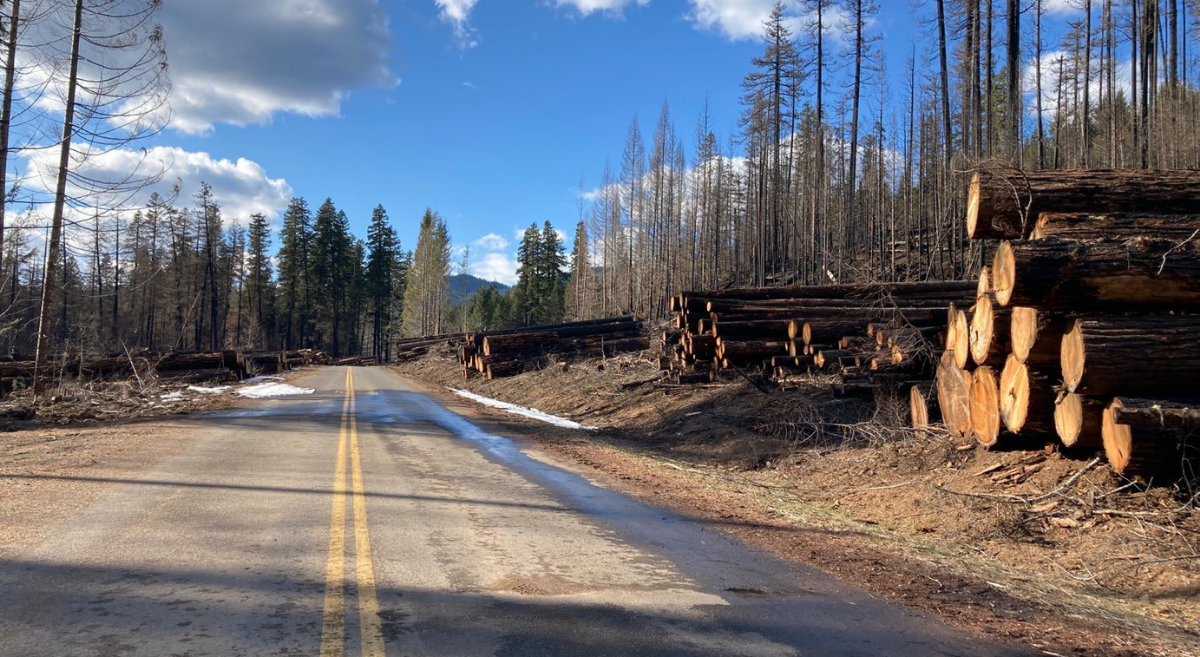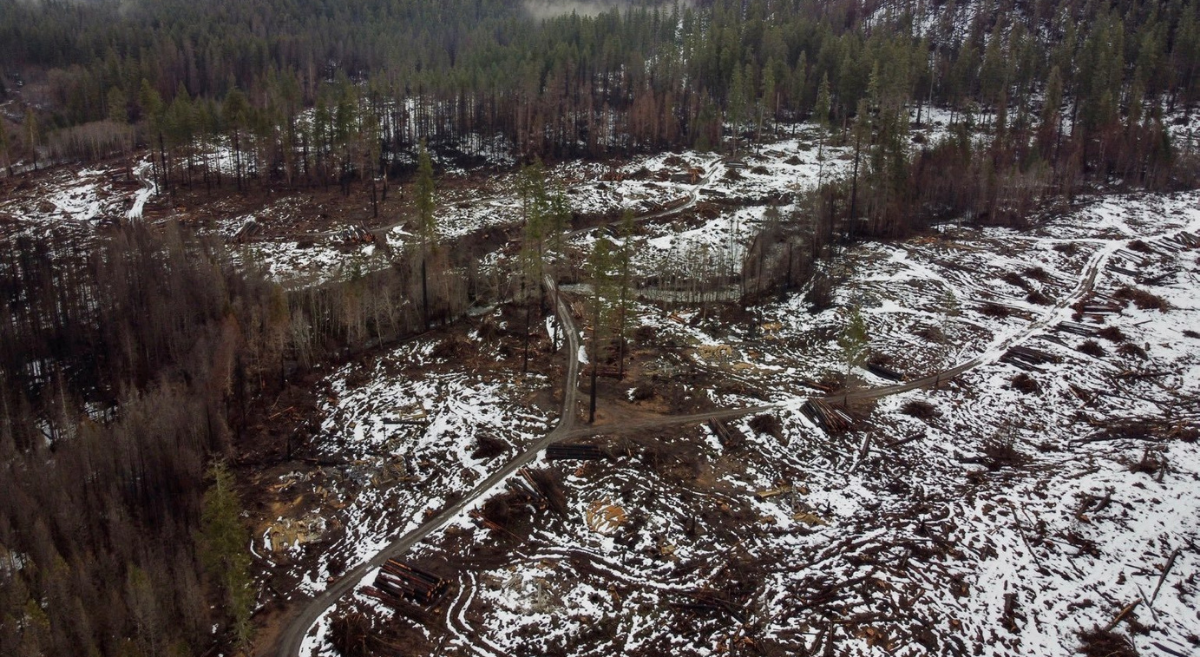
- Contributed by Sam Krop
In the aftermath of the 2020 Labor Day Fires, Oregon’s forests are ringing with the sounds of chainsaws. These days, visitors to fire-impacted federal lands will see miles of clearcut corridors along roadsides where trees have been removed by forest management agencies in the name of public safety. While “hazard tree removal” is intended to eliminate possible hazards that standing dead trees, or burned snags, could pose for human safety, the scope and scale of logging currently occurring and being proposed in our forests illustrate a heavy-handed and ecologically impactful approach.
Cutting along the Breitenbush River - Number 1 from Green Oregon on Vimeo.
While we’re often calling attention to the impacts and overreach of post-fire clearcuts, this “hazard tree” and roadside tree removal also has huge impacts on forests, scenery, wildlife corridors, water quality, and carbon storage. Places like the Willamette National Forest, where the Santiam Complex fires burned through large swaths of federal land, are witnessing an unprecedented level of roadside logging. Highway 46, a well-loved route for forest visitors and locals to the town of Detroit and the Breitenbush community, is one heartbreaking example of what these hazard tree removal projects look like when finished. Travelers on this road used to find themselves winding through old-growth forest and breathtaking views of the wild Breitenbush river; now a drive along Highway 46 features massive 150-250ft clearcuts along either side of the road. The remaining log piles reveal that the logging included many living trees and ancient legacy trees that could have lived to see the spring.

Highway 46 is just one example of the kind of heavy-handed hazardous tree removal that is being proposed along hundreds of miles of roads across the state of Oregon. In many cases, these proposals are advancing as Categorical Exclusions (CE’s) to bypass the required environmental impact analysis and public participation process. Additionally, much roadside logging is currently proposed for roads that are rarely used or have been decommissioned and are used only by recreationists for hiking, wildlife watching, foraging, biking, and hunting. Rarely used backcountry roads proposed for this same hazard tree removal near Opal Creek Wilderness and Breitenbush Hot Springs are among the most egregious of these examples.
Post-fire logging, including roadside tree removal, disrupts sensitive burned soils and degrades water quality with sedimentation and chemicals, removes complex fire-created habitat that many species rely on, and sets the forest back along its natural path of recovery. Due to weakened environmental protections for projects occurring under the banner of hazardous tree removal, in many cases, this logging can occur with little or no buffer for streams and can include old forest that would normally be protected.
Post-fire logging also undercuts the natural sequestration and storage capacity of post-fire forests. After even the most severe wildfires, most of the carbon remains in the forest in remaining living trees, standing dead trees and fallen logs that take decades, even a century to decompose. The process of logging and manufacturing of wood products emits most of that stored carbon back into the atmosphere immediately and additionally contributes to carbon emissions that worsen climate change.

When we look at extensive ongoing and proposed roadside and hazard tree removal, we need to also consider the scope of post-fire logging currently occurring across the state and these activities’ cumulative effects. Already, over 30,000 acres are proposed for post-fire timber sales and roadside hazard-tree logging in federal lands across the state. Taken in total, the effects of all these proposals advancing are mind-boggling.
It doesn’t have to be this way. After the historic Eagle Creek fire in the Columbia River Gorge, the Forest Service decided to temporarily close low-traffic roads to allow for the natural process of regeneration to take its course. The approach taken in the aftermath of last year’s Labor Day fires stands in stark contrast to the practical, science-based approach taken after the Eagle Creek fire. Today, the forest in the Columbia River Gorge is once again open to the public, and the forest is a beautiful example of the natural process of rebirth after fire. We could choose to do the same for the forests that burned in last year’s fires and abandon the current plans to log along hundreds of miles of roads, often unnecessarily.
While it is important and necessary to consider public safety in the aftermath of wildfires, the scope and intensity of logging occurring throughout the state betray a commitment to timber revenue over ecologically responsible, climate- and habitat-smart forest management. Rather than a one-size-fits-all landscape-level approach to hazard tree removal, management of sensitive fire impacted forests should be site-specific, thoughtful, and only target trees that truly pose a threat to public safety. Hazard tree removal activities should not occur in rarely-visited places, or places that could reasonably instead be closed to the public as nature takes its course.
What we choose to do now will matter for generations to come. Rather than hastily log as much fire-impacted forest as possible, as much as we can, we must adopt the pace of nature and be patient. Please help us tell Senators Ron Wyden and Jeff Merkley that we prefer standing fire-impacted forests to clearcuts, even if it means we need to take some time before returning to many of Oregon’s beloved forest roads.

